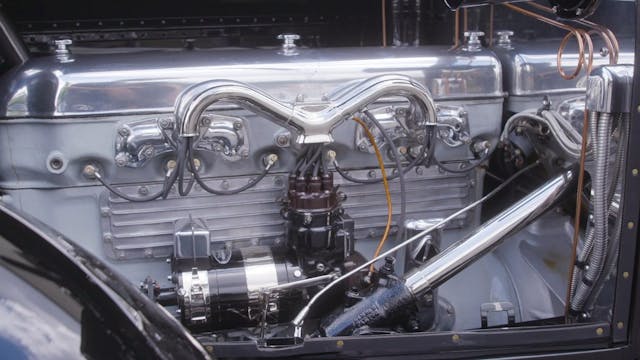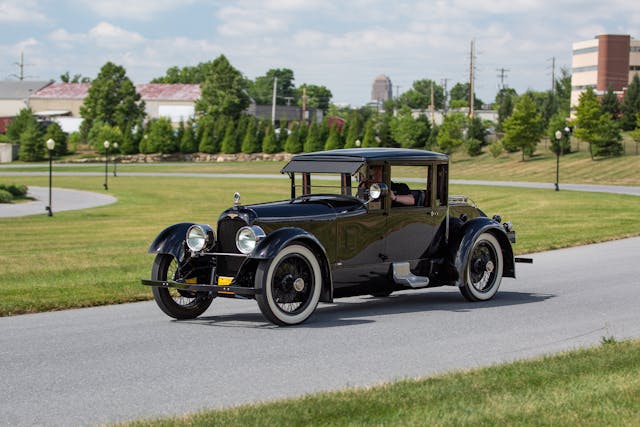A view from inside the legendary Castle Duesenberg
It’s an amazing car—an incredibly significant piece of American automotive history with an equally remarkable story. What could be better? Driving it, of course.
Since we all can’t be as blessed as Brandon Anderson, executive director and CEO of the Auburn Cord Duesenberg Automobile Museum, we’ll have to settle for watching him drive the 1921 Duesenberg Straight Eight that was recently added to the National Historic Vehicle Register.

Although it isn’t mentioned in the latest video released by the Historic Vehicle Association, Anderson needs a little help to reach the pedals. He’s 6-foot-3, but because the Straight Eight was custom-built for its original owner—7-foot-tall Hawaii businessman Samuel Northrup Castle—the average-size person needs to use a leather-covered back cushion to operate the huge automobile. You can see it when Anderson explains how to start the Castle Duesenberg, a complicated endeavor that’s well worth the effort.
Once the car has warmed up and takes the track at the NB Center for American Automotive Heritage, we’re in for an amazing ride. The sound produced when the 260-cubic-inch inline-eight reaches speed is spectacular, too.

“There’s an exhaust cutout (in which) you basically bypass the exhaust and give it a real loud growl,” Anderson says. “I feel like I’m racing … You’d definitely hear this coming down the road.”
Prior to that, Anderson demonstrates the three-speed car’s double-clutch configuration, first shifting into neutral, and then into second gear. “The double clutch can be a lot of fun,” he says. “Some days it’s your friend, some days it’s not.”

Although the Duesenberg is large—134-inch wheelbase and 4205 pounds—it is much more sprightly that you’d expect.
“The steering is incredibly nimble and light,” Anderson explains. “Part of that is you have a racing engine in a light coupe, so you’ve got a lot of power and you’ve got a lot of push from the rear-wheel drive … It almost feels like this car has power steering, which obviously isn’t the case.”

Anderson finishes the drive by touting the importance of driving historic automobiles, as opposed to just looking at them.
“It is an honor and privilege to be able to drive these vehicles,” he says. “Getting them out is part of their preservation. They should not just sit inside a museum and never run again. It is in their best interest to run. They were made to run.”
We’re thankful to be part of the experience.


